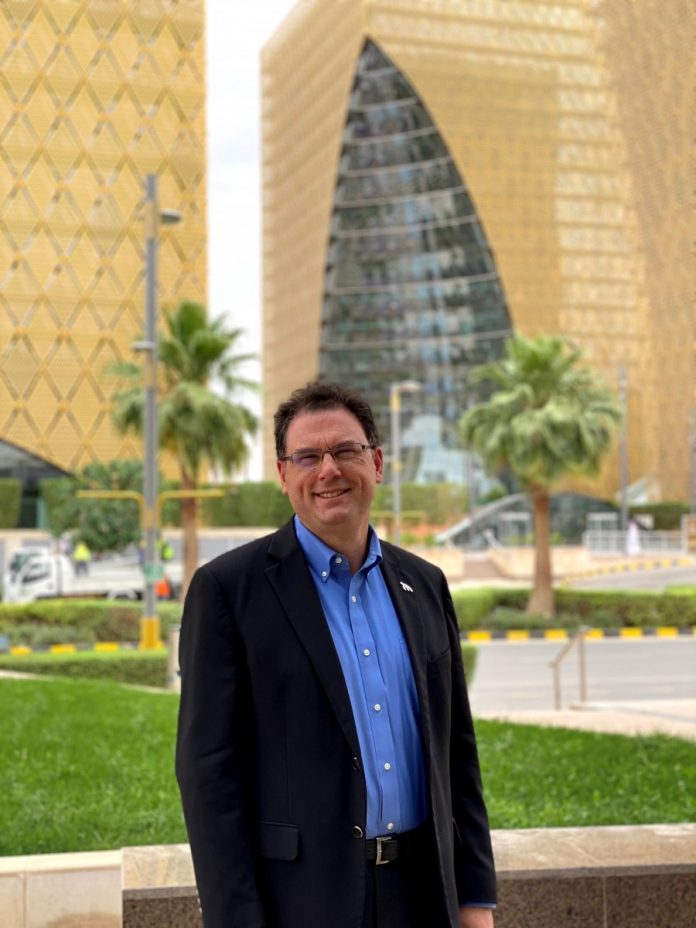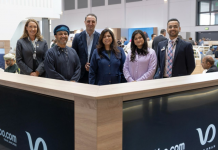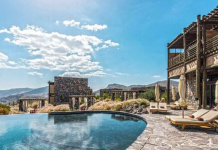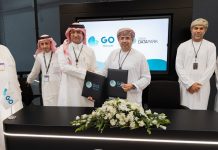
The Red Sea Development Company (TRSDC) was established in 2018 as a closed joint-stock company wholly owned by the Public Investment Fund (PIF) of Saudi Arabia to drive the development of The Red Sea Project, a regenerative tourism destination along Saudi Arabia’s west coast, and one of three giga-projects announced by HRH Crown Prince Mohammad bin Salman bin Abdulaziz Al-Saud in 2017.
Michael Slage, Senior Director, Venture Development and Innovation at The Red Sea Development Company sheds light on the significance of the project in terms of the region’s history and tourism. Swathi Suresh, Digital Editor, reports exclusively for OERLive.
Can you tell us about how the journey has been for the Red Sea Development Company since its inception?
The Red Sea Development Company has come quite a long way since it was originally announced. We not only have the at The Red Sea Project development area, but AMAALA has become one of our development projects as well along with a dozen other projects along the Red Sea.
The Red Sea Project and AMAALA, amongst the world’s most ambitious regenerative and luxury tourism destinations, will be a cornerstone in Saudi Arabia’s and the wider region’s economic diversification.
Alongside offering unparalleled luxury, we are pioneering a new relationship between luxury tourism and the natural environment. The Red Sea Project and AMAALA go beyond “just” sustainability to advance sophisticated natural regenerative tourism development.
“Regenerative tourism” is the commitment to implement policies that don’t just avoid harming the environment but actively enhance it. This includes local, natural, and cultural assets as well as the quality of life of local people.
Our goal is to deliver on our two biggest commitments:
1.100% renewable energy 24/7 to become the world’s largest destination run solely on clean power – an accomplishment which has never-before been achieved on a project of this scale.
2.30% net positive conservation benefit by 2040.
While both sites sit on a combined land of more than 32,000sqkm (roughly the size of Belgium), we are only developing less than 1% of The Red Sea Project site and 5% of the AMAALA site.
We are restricting the number of guests our destination can safely accommodate without damaging the environment. We will limit the visitors to The Red Sea Project at one million annually by 2030, and visitors to AMAALA will be capped at just 500,000 per year by 2030.
We are developing new best practices in the way design and sustainability govern the planning, development, and operation of the whole destination.
A dedicated regulatory framework will set international standards in environmental protection and sustainable development, and as a result, construction will be minimally invasive.
Our approach will ensure Saudi Arabia’s precious marine and wildlife habitats will not only be protected and preserved but – through the careful consideration of the environment at every stage of the planning and development process – biodiversity will be enhanced.
Upon full completion, both projects will be home to a total of 75 hotels offering up to 11,000 keys.
Approximately 1,000 residential properties will also sit within The Red Sea Project, offering an exclusive second or even third home in the Kingdom for a select few in a luxury resort setting.
We are also developing an international airport that will be accessible to 80% of the world’s population in less than eight hours and is expected to serve up to one million passengers per year by 2030.

Saudi Arabia is undertaking the first-ever underwater excavation of a shipwreck. Can you tell me how crucial this project is to the company?
The excavation marks an extremely crucial milestone in our journey to responsibly develop the extraordinary natural beauty and historical value of the Red Sea.
The starting point of all our efforts is the simple fact that the natural resources across our site are an irreplaceable asset that must always be safeguarded.
At every stage of the planning and development process, we ensure that the precious marine and wildlife habitats will be carefully protected and preserved.
Never before has such a discovery been made in Saudi Arabia. We are thrilled to have the Saudi Arabia Ministry of Culture and The University of Napoli L’Orientale as our partners in exploring the historical significance of this unique region while ensuring the preservation of our discoveries.
What are the tourism opportunities harbouring around this project?
We believe that this will be a unique dive site that will attract global travellers. We hope to welcome many of the seven million dive tourists who annually travel around the globe searching for new and unique places.
For those who are not divers, we are looking at other ways to enable them to access the site – either through submarines and glass-bottom boats or via the Red Sea Museum to see the artefacts being conserved and displayed.
Ultimately, we aim to capture a share of an emerging segment of travellers who prioritize culture during their travels
According to UNESCO, 60% of visitors choose to visit destinations that are home to heritage assets, and 40% will stay longer in such locations.
We believe that by developing accessibility to our heritage sites, of which the shipwreck is only the first of many, we will be able to tap into this emerging trend.

How important is this to learning about early-age maritime and the history of civilizations in the region?
It’s a very important excavation because it is the first underwater excavation that is taking place in Saudi Arabia. It reveals fascinating insights into some of the earliest civilizations of the Arabian Peninsula, who frequently travelled through Saudi Arabia and the Red Sea at the crossroads of an integral trade route.
Such operations are crucial for a deeper understanding of how early societies evolved, while also enhancing the heritage sector’s contributions to economic and creative growth. We are able to see glimpses of the life of sailors dating back to 1725-1750, so it’s a very important find.
The spectacular cargo of this 18th-century shipwreck sheds a light on the intense trading activities that took place in the Red Sea. An intact cargo of potentially 1,000 tons including approximately 4,000 highly decorated earthenware jars, porcelain and spices which is approximately 40 meters in length and 10 meters wide.
This is particularly fascinating as this trading predates the opening of the Suez Canal, showing the importance of the area as a hub for trade across the wider Indian Ocean.
The preserved wooden structure also represents unique evidence of massive and expensive boatbuilding construction, previously unknown in the region.
Can you tell us more about the Red Sea Museum in Jeddah and the kind of contents that will be preserved in it?
The Red Sea Museum will be Saudi Arabia’s first maritime museum, making it the first world-class facility in the country to properly conserve and display underwater archaeology.
The museum will not only preserve, catalogue, and store all artefacts from this shipwreck excavation, but it will also be home to findings from future excavations and archaeological surveys.
How will the excavation site encourage educational tourism for students from across the region? Is there a plan for this?
The excavation site is an educational attraction for all kinds of visitors from across the region. The findings will help everyone learn more about the exciting past of Saudi Arabia and the region, as well as the central role it played in the development of trade and business.
We are working closely with the various ministries within Saudi Arabia. This includes the Ministry of Culture’s Heritage Commission and, the Museums Commission’s as well as the Culinary Arts Commissions, be able to study, document and be able to preserve and present different facets of the local culture that such findings represent.





